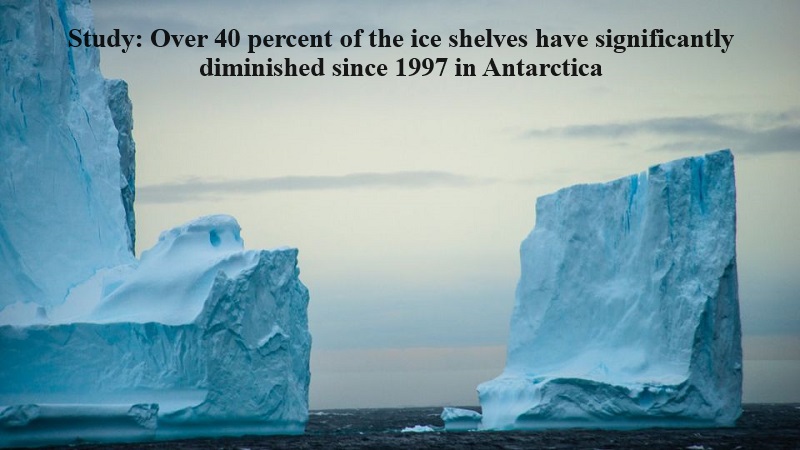
A recent investigation carried out by scientists at the University of Leeds has unveiled a worrisome trend in Antarctica, where more than 40 percent of the ice shelves have significantly diminished since 1997. What is particularly concerning is that almost half of these ice shelves are showing “no signs of recovery,” and this phenomenon is closely linked to climate change.
According to the researchers’ calculations, between 1997 and 2021, the western part of Antarctica lost a staggering 67 trillion tonnes of ice, while the eastern side saw a gain of 59 trillion tonnes. Nevertheless, the net result is a substantial ice loss of 7.5 trillion tonnes during this period.
This imbalance is attributed to the influence of warm water in the western region causing ice to melt, while the eastern area remains relatively stable or even gains ice due to colder water conditions, as reported by The Guardian.
The Implications on Ocean Currents Ice shelves, which are positioned at the end of glaciers, function to impede the flow of glacial ice into the sea. As these ice shelves decrease in size, they release larger volumes of freshwater into the ocean, which can disrupt the crucial currents of the Southern Ocean. This disruption has widespread consequences on ocean circulation, which can subsequently impact global climate patterns.
Dr. Benjamin Davison, an Earth observation expert and the lead researcher, reportedly remarked, “There is a mixed picture of ice-shelf deterioration, and this is to do with the ocean temperature and ocean currents around Antarctica.”
He went on to explain, “The western half is exposed to warm water, which can rapidly erode the ice shelves from below, whereas much of east Antarctica is currently protected from nearby warm water by a band of cold water at the coast.”
Satellite-Based Research The study relied on satellite technology to monitor annual changes in the ice, even during the long polar nights when cloud cover can obscure observations. More than 100,000 images captured from space were scrutinized to assess the condition of Antarctica’s ice shelves, which hold global significance. This satellite-based research offers valuable insights into the environmental changes taking place in Antarctica and their potential consequences for the planet’s climate and sea-level rise.

Post Your Comments